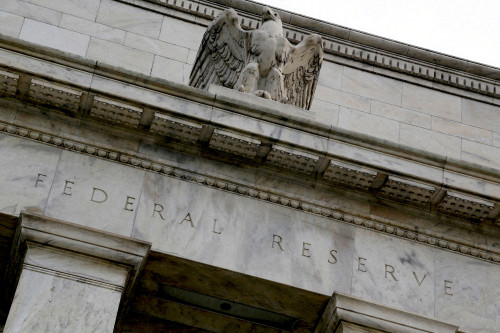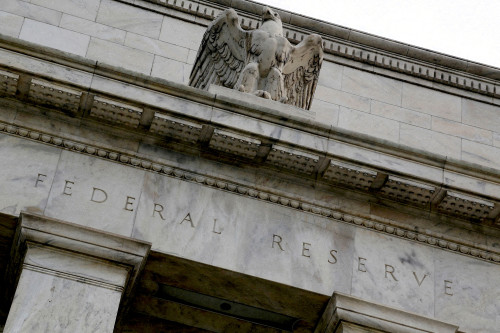By Davide Barbuscia
NEW YORK (Reuters) – A potential slowdown of the Federal Reserve’s balance sheet drawdown and Treasury Secretary Scott Bessent’s assurance against imminent long-term debt hikes could offer relief in the near term to bond market jitters as fiscal concerns linger.
Fed minutes from the January 28-29 rate-setting meeting released this week showed officials weighed a possible pause or slowdown of the Fed’s balance sheet reduction, known as quantitative tightening (QT), as a binding government debt cap could complicate the central bank’s ability to gauge market liquidity. Meanwhile, Bessent said in an interview with Bloomberg Television on Thursday that, for now, expanding long-dated government debt issuance is not on the table.
Treasury yields, which move inversely to prices, declined after the Fed minutes on Wednesday and Bessent’s interview injected further optimism pushing yields lower on Thursday.
Still, his remarks did not disrupt market expectations of increased government debt, as investors and analysts anticipate the Treasury will eventually need to borrow more to offset a drop in government revenues from President Donald Trump’s proposed tax cuts.
Brij Khurana, a fixed-income portfolio manager at Wellington Management, said it was encouraging to have a Treasury Secretary “who is mindful of the funding costs.” Bessent said earlier this month the focus of the Trump administration was to contain the benchmark 10-year Treasury yields.
“At the same time, if yields are materially lower, then they’re probably going to do more tax cuts … if yields go a lot lower, I think Bessent would try to push to longer-dated bonds,” said Khurana.
Analysts at JPMorgan said in a note on Thursday bond market concerns over excessive debt supply could recede into the background over the next months, given the focus of the administration on long-term yields. But they said they still expected large government borrowing needs in the next fiscal year will lead to increases in long-dated debt sales.
Trump plans to renew and expand tax cuts he signed into law during his first presidency in 2017, which are set to expire at the end of this year. This could increase deficits by over $4 trillion over the next 10 years, the Congressional Budget Office has estimated.
Federal spending cuts driven by Elon Musk’s Department of Government Efficiency (DOGE), along with potential revenue from Trump’s planned tariffs on imports, could help curb deficit growth, though the extent of their impact is uncertain.
“The push and pull here is that on one side you have what looks to be a meaningful increase in deficit spending from the tax deal, and on the other side there’s potentially … some savings to be found from DOGE, maybe some budget cuts,” said Brian Kennedy, a portfolio manager at Loomis, Sayles & Company.
“I don’t think this changes our opinion that the long end of the Treasury curve is going to continue to struggle to perform,” Kennedy said. “Is DOGE going to be that effective that you’re going to save a meaningful amount of money to offset these tax cuts? I’m a little skeptical of that.”
Musk has pledged to find $1 trillion in savings through his efforts to identify fraud and waste in the government.
DOGE said on its website on Thursday it had saved $55 billion since Trump took office on January 20, but Musk’s government cost-cutting effort has so far pared hundreds of relatively small contracts it says have saved U.S. taxpayers $8.5 billion, according to a Reuters analysis this week of partial data published by his team.
Potentially the market’s ability to absorb higher government debt supply could, to some extent, benefit from an unwinding of QT, as the central bank would start reinvesting maturing bonds instead of letting them roll off.
The Fed minutes showed officials are also considering a shift to a bond portfolio that mirrors the maturity of the outstanding Treasury market. The Fed’s Treasury holdings are currently skewed towards long-dated debt, so this suggests it could, over time, reinvest more in shorter-dated securities.
“On the margin, this will reduce (but certainly not eliminate) any future auction size increases in 2s and 3s,” BMO Capital Markets analysts said in a Thursday note, referring to two- or three-year Treasuries.
“That being said, the more relevant impact on any eventual auction size increases will come from the budget process as well as the performance of tax revenues,” they said.
(Reporting by Davide Barbuscia; Editing by Paritosh Bansal and Andrea Ricci)


